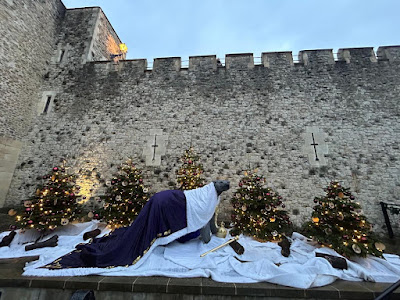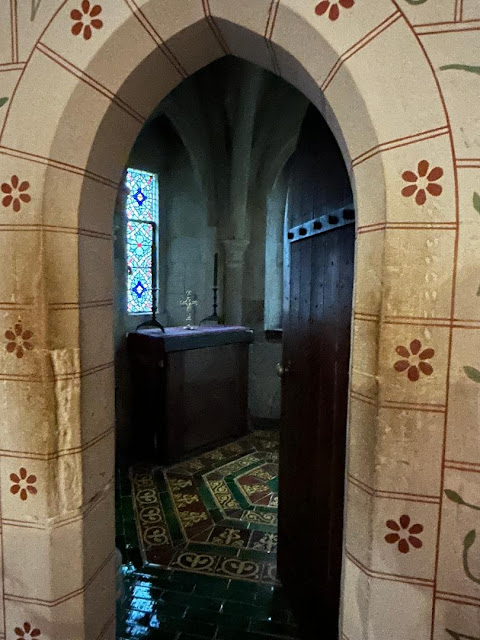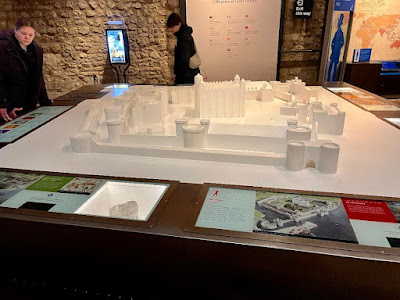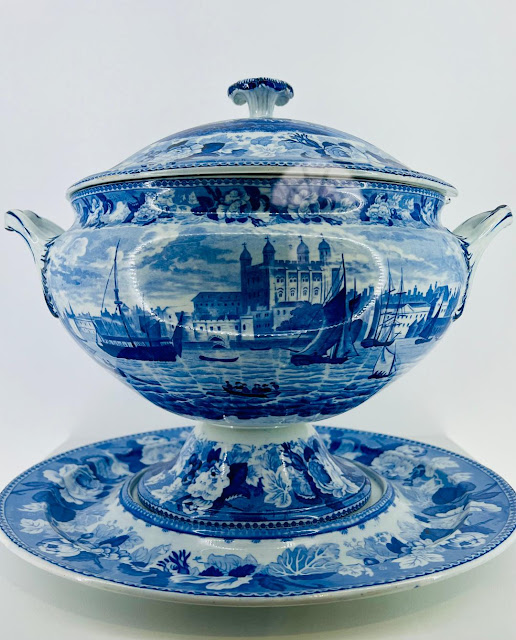19-12-2023 .. Monday .. LONDON
TOWER OF LONDON continued ..
THE CROWN JEWELS
The Crown Jewels have been stored and displayed at the Tower of London since 1661, continuing a long tradition of storing precious objects here. This magnificent world-famous collection of 23,578 gemstones is part of the Royal Collection and boasts items that are still used in royal ceremonies today. The heart of the Crown Jewels collection here is The medieval Coronation Regalia. Items from the Crown Jewels only leave for ceremonies like the State Opening of Parliament, Coronations, and Royal baptisms and those items are tagged with 'in use' signs for easy references.
An inscription says that The Crown Jewels at the Tower of London have survived many ordeals over the centuries.
The following are attracted and invited my attentions & interests.
The Koh-i-Noor diamond …
The Koh-i-Noor diamond is one of the most famous diamonds in the world. It weighs 105.6 carats. It was once much larger but was re-cut in 1852 to improve its brilliance and conform to contemporary European tastes. The Koh-i-Noor was set in the Crown of Queen Elizabeth the Queen Mother in 1937.
Originating from the Golconda mines in central southern India, the diamond, a symbol of conquest, has had many previous owners including Mughal Emperors, Shahs of Iran, Emirs of Afghanistan and Sikh Maharajas.
The Cullinan Diamond …
Discovered in South Africa in 1905, the diamond is the largest gem-quality uncut diamond ever found at 3106 carats and it was presented to Edward VII on his 66th birthday in 1907. It was split into nine major stones and 96 smaller brilliants. From the largest two stones, one weighing 317.4 carat is set in the front band of the Imperial State Crown and the other in the Sovereign’s Sceptre with Cross. The Sovereign’s Sceptre with Cross was made for the coronation of Charles II in 1661 and it has been used at all coronations since.
The hammer and knife used to make the first cuts to this diamond are on display.
The Black Prince's Ruby …
Set in the front cross of the Imperial State Crown, the Black Prince's Ruby is not actually a ruby, but a semi-precious stone called a balas or spinel.
According to legend, in 1367, the stone was given to Edward the Black Prince, son of King Edward III, by Pedro ‘’the cruel’’, King of Castile, who took the ruby from a Muslim King of Granada. King Henry V is said to have worn the stone set in his helmet at the Battle of Agincourt in 1415.
The Stuart Sapphire …
The Stuart Sapphire is set at the back of the Imperial State Crown. The stone may have belonged King Charles I, whose son, James II, is said to have smuggled the jewel out of the country when he was deposed during the ‘Glorious Revolution’ of 1688. The Stuart Sapphire eventually made its way back to England and was set in state crowns since 1838.
I was much thrilled while looking at the Koh-i-Noor diamond. It fascinated me.
The Coronation Procession …
There is a room dedicated to the spectacle, pageantry and community of the Coronation Procession. That displays present Coronation Processions throughout history, celebrating the contributions of the many people who took part in these unique events. A series of objects from the Royal Ceremonial Dress Collection - a designated collection of national and international importance, cared for by Historic Royal Palaces which contains 10,000 items of historic dress from the 16th century to the present day - are on display. The eye-catching is an exquisite court suit worn at the Coronation of George IV.
Photography is strictly prohibited in the Crown Jewels display area.
Some clicks while making rounds at Tower of London …
As the closure time is approaching, we skipped many places including Medieval Palace, Bloody Tower, Fusiliers Museum and Royal Mint exhibition (all are inside the Tower of London).
We at Tower of London …
And stepped out and landed on a path leading to London City’s famous river Thames. A few steps away is the iconic symbol of London, the TOWER BRIDGE.



























No comments:
Post a Comment